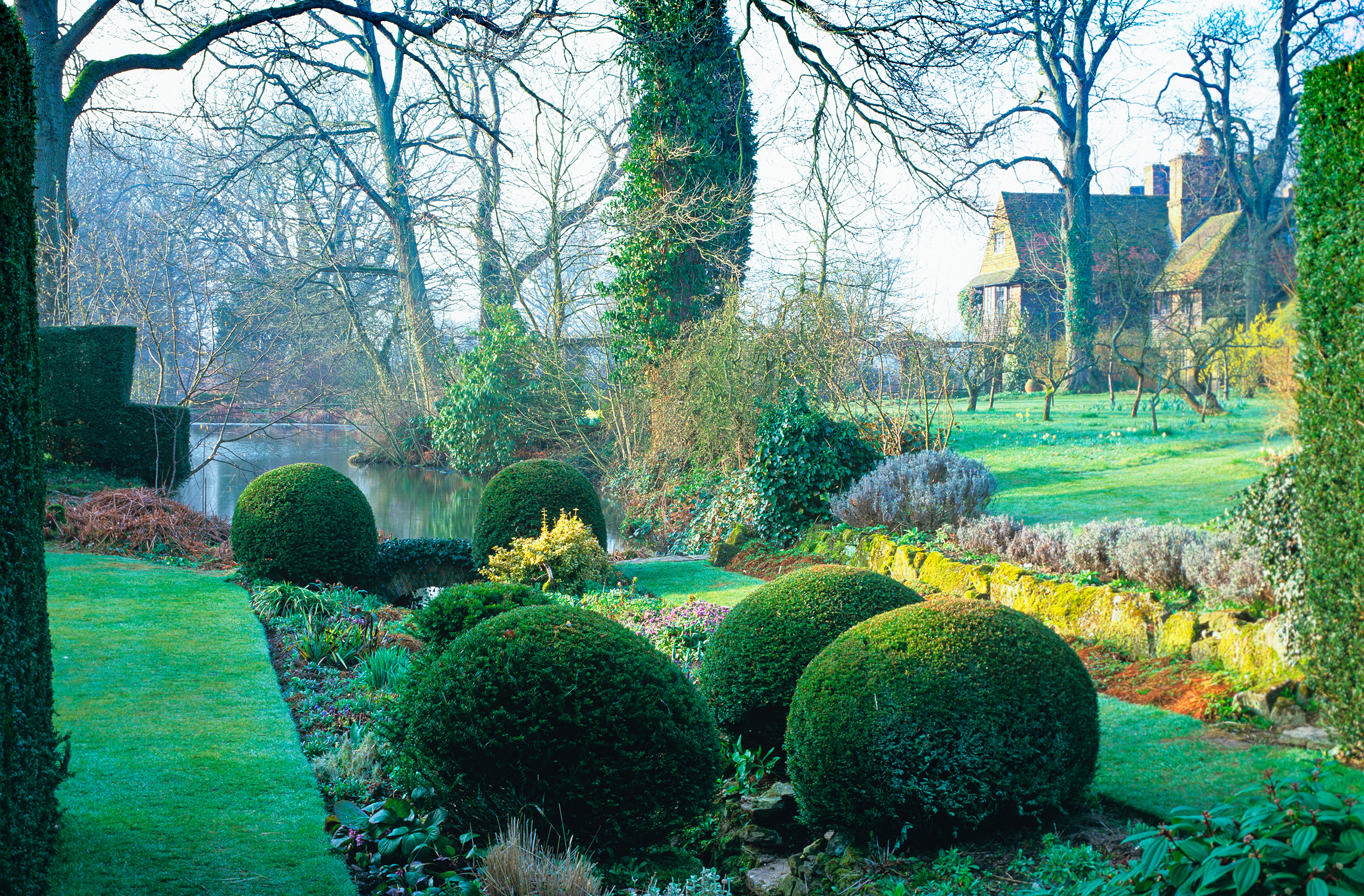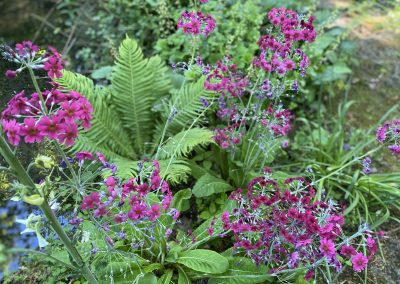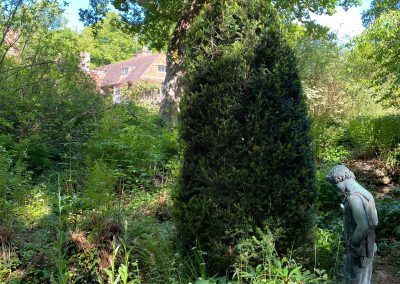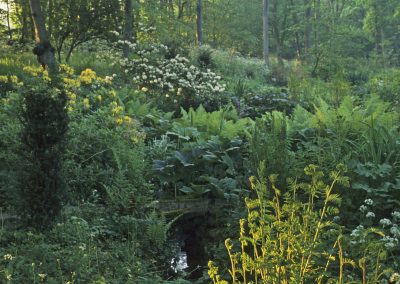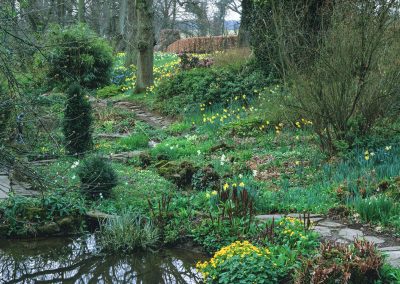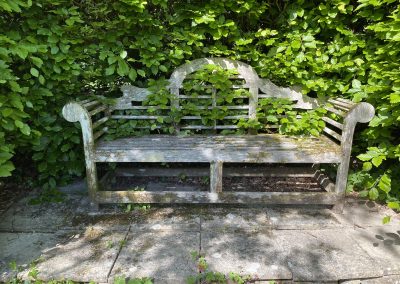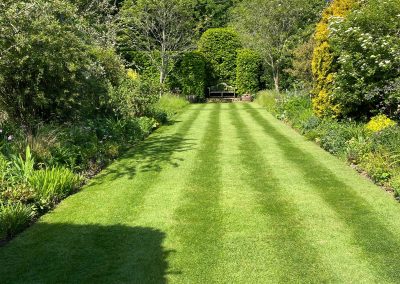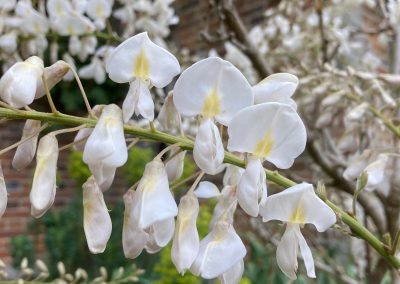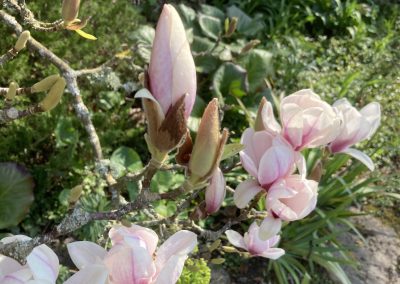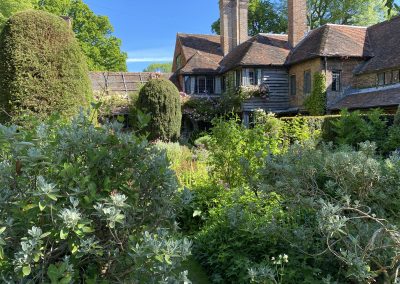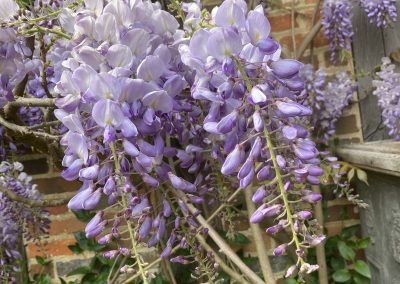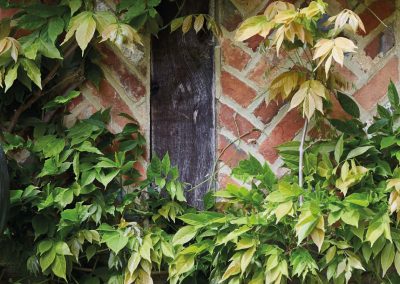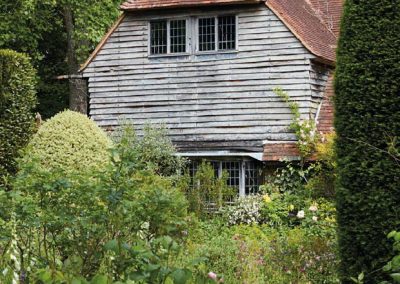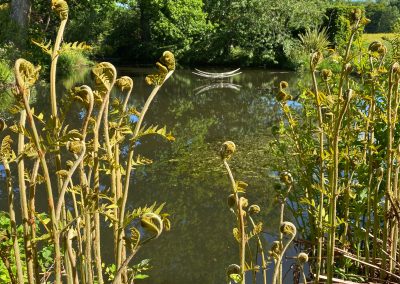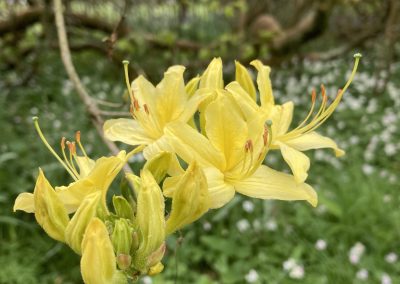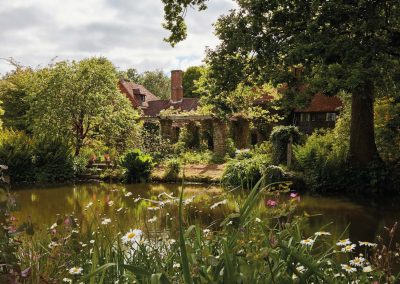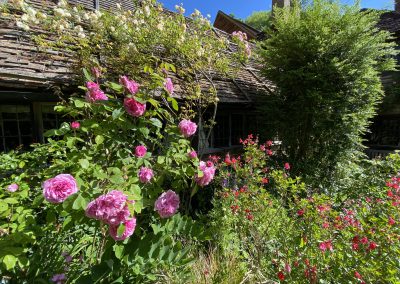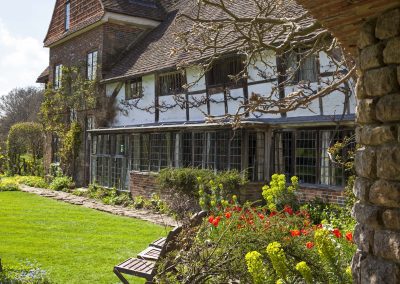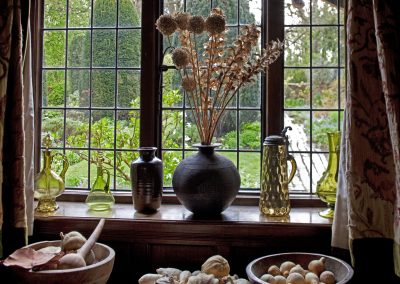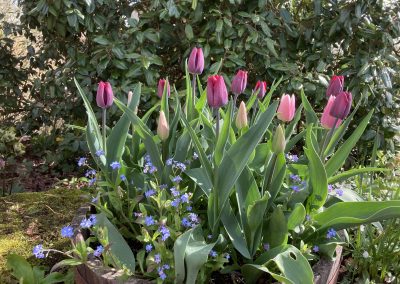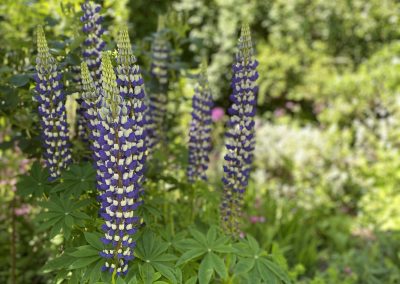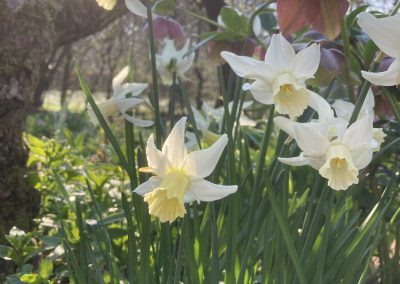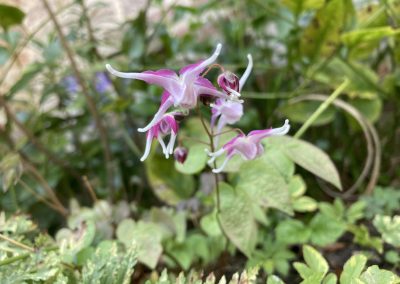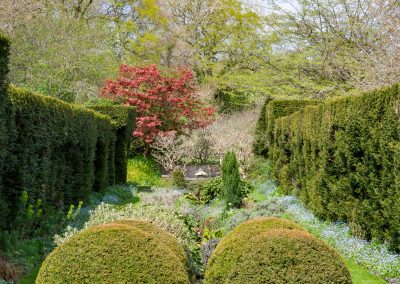Jekyll Water Garden
Centenary Garden
Old Garden
Pond
South End & Main Lawn
Yew Walk
Jekyll Water Garden
Below the dam, the four pools of the Jekyll Water Garden descend into the woodland valley. Paths of Bargate stone and informal bridges cross-cross the stream. In spring the valley sides are bright with yellow daffodils, the blue of Anemone appenina and blanda, large clumps of hellebores, Leucojum, the white Anemone nemerosa and the more subtle colour of Fritillaria meleagris. Later azaleas, red Japanese maples, rodgersias, arums and the tall Darmera (Peltyphylum) peltatum, along with a multitude of ferns, are the dominating theme. A large stone seat, looking onto a small bronze figure of Narcissus provides a formal focus and a point of rest. Unfortunately, as Mary Caroe remarked, “for the gardeners, there is too little time to rest!”
Regular renovations were made to small areas of the water garden. These usually started with inserting a polythene ‘cordon sanitaire’ to restrain re-invasion by ground elder and then the area is replanted with existing hosta, camassia, primula, hemerocallis, saxifraga, Leucojum, epimedium, pulmonaria, astilbe and other damp-loving plants in the Jekyll manner.
As the stream descends towards the woodland beyond it winds through a deep channel to Grandmother’s White Garden where drifts of snowdrops in January and February are succeeded by white fritillaries, (purple invaders are carefully moved elsewhere), narcissus and Solomon’s seal and in summer, large shrubs of Philadelphus, white Spiraea and white Martagon lilies. A footpath continues beside the stream into the hazel coppice of the narrow and steep ghyll, where carpets of bluebells, primroses, violets and a few early dark spotted orchids can be found.
Hazels continue to be coppiced and the chestnut pale fence, erected in 1907, repaired. After coppicing, we stack the ‘brash’ over hazel stools in an attempt to prevent deer from cropping the new growth as their ‘salad bowl’.
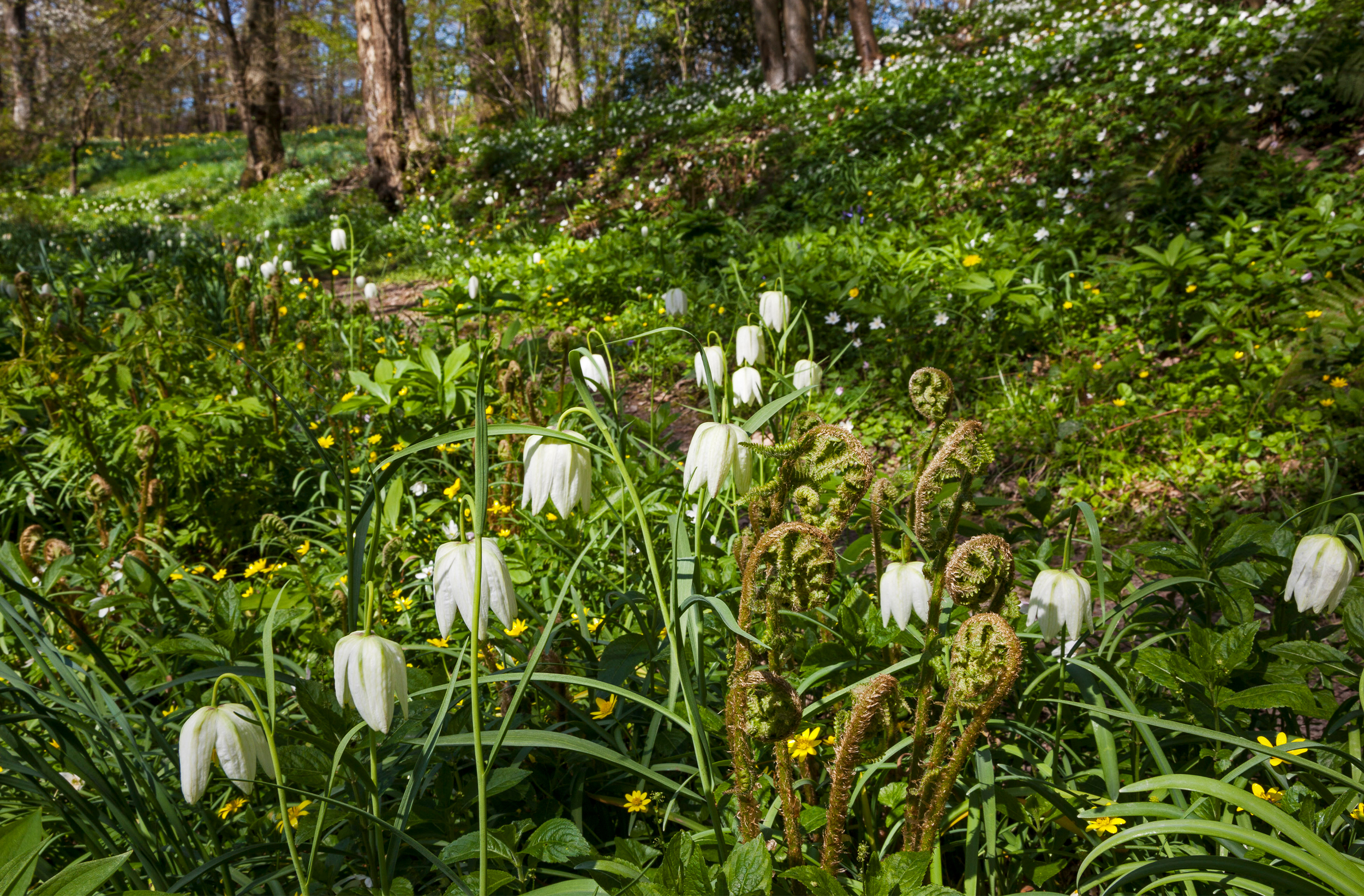
Centenary Garden
The Centenary Garden was built in 2008 to commemorate 100 years of the Caroe family living at Vann. It was designed by Mary Caroe and has small yew pavilions enclosing oak seats made to a W.D. Caröe design.
The seasoned oak came from a tree grown on the property, and each seat sits on paving made from upturned bottles to recall the ancient Wealden glassworks in a nearby copse, excavated in 1931 by Martin’s father, Alban Caroe, and Dr S.E Winbolt. A raised diamond shaped bed in the centre grows early vegetables. Locally made iron arches support annual climbers.
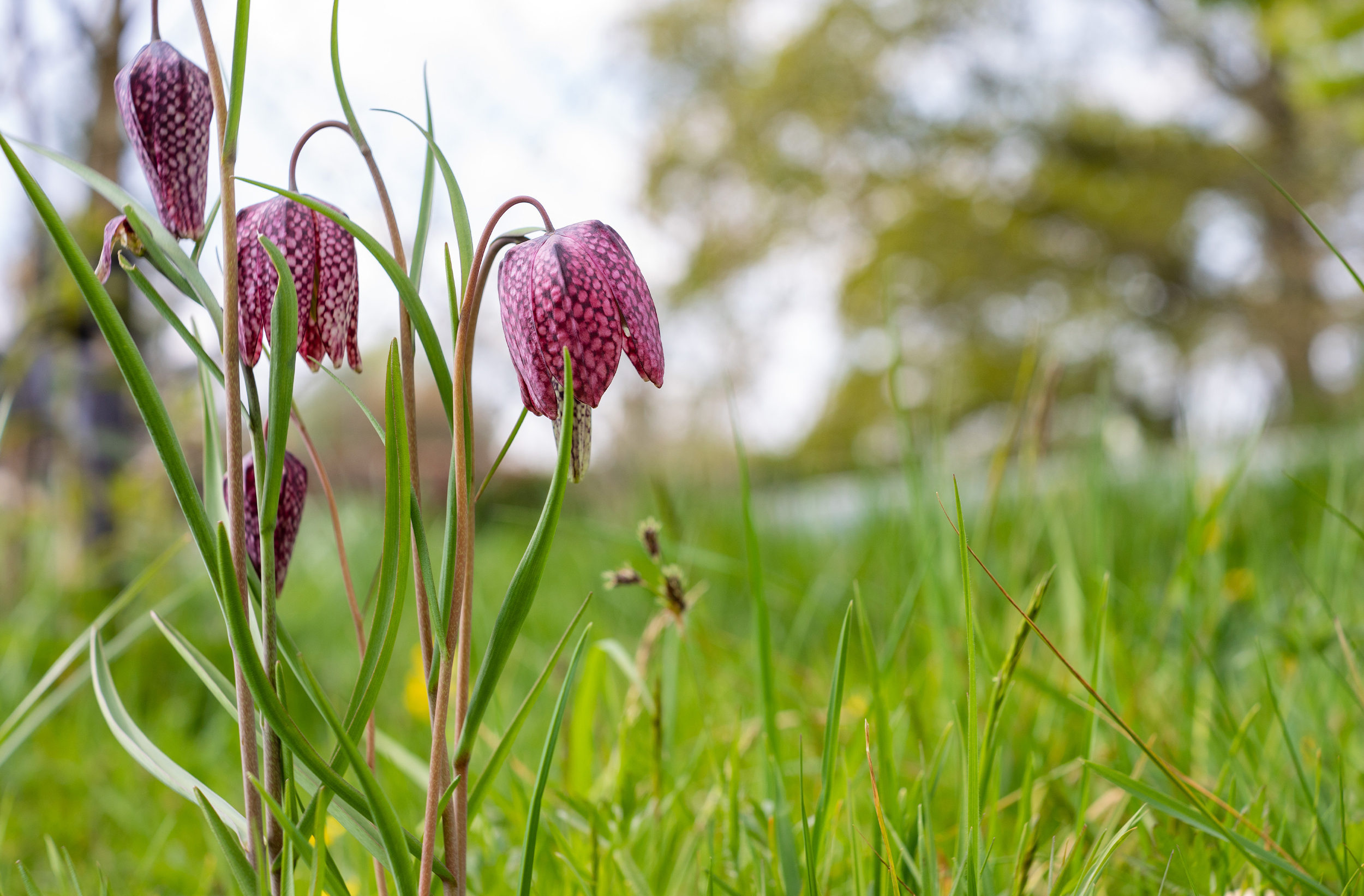
Old Garden
To the east of the house lies the Old Garden, bounded by the house on two sides. It is composed of a series of rectangular beds bordered by brick paths and grass. Tall clipped yews provide a ‘presence’ throughout the year. The Fuschia magellanica provides colour and structure in late summer and autumn.
Though the layout is formal, the planting is informal. A foliage bed beneath the Barn corridor is filled with Iris confusa, penstemon, grasses, ivies, santolina, sedum and phlox. Elsewhere, self-sown forget-me-nots, Viola labradorica, cowslips and aquilegia carpet the ground under the hybrid tea roses; hellebores, bluebells, Tellima grandiflora, aconite and geraniums lie under old fashioned roses such as Fantin Latour, Mme. Hardy, Belle de Creçy, Celeste and Rosa Mundi. Bulbs, herbaceous plants and shrubs intermingle with the addition of some clumps of annuals and half-hardy shrubs to ensure the garden appears furnished throughout the year.
In spring and summer, rambler roses, Chaenomeles, Abutilon and Actinidia cover walls and roofs. More recently, in a bid to reduce the necessity for bedding plants in summer, scented perennials have been planted in the beds, Calamintha, Ruta graveolens (rue), santolina, origanum, woad and various salvia.
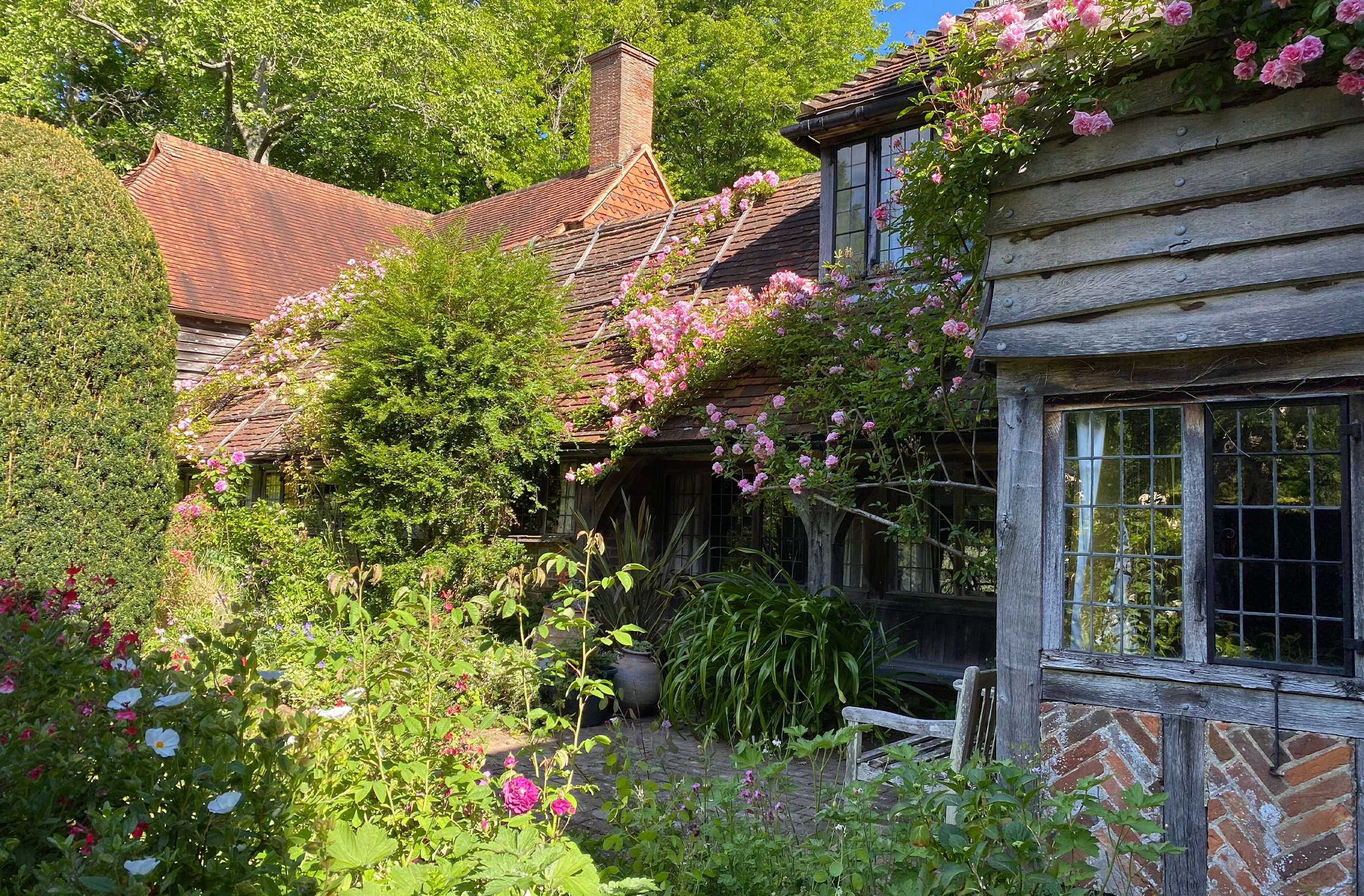
Pond
The Pond itself, about a quarter of an acre in area was densely overhung with large oaks in the 1970s but several fell in the two storms of 1987 and 1990. This has enabled new planting in areas that now receive light; at the north end with Iris foetidissima, Eleagnus angustifolia and Rubus tricolour, to the east with Cornus, climbing roses, water irises and a large Phormium. The dam is planted with wild iris, Mahonia, Osmunda regalis, Cornus stolonifera Flaviramea and Gunnera manicata. The pond was dredged in 2017 and the east border replanted with hostas, irises, Zantadeschia, pulmonaria, geranium and the rare buddleia type shrub Comanthospace depends.
More recent planting along the length of the west bank of the pond includes Salix, Viburnum carlesii, helleborus, Rubus, species Paeonies and the twisty hazel Corylus avellana contorta.

South End & Main Lawn
A lawn beside the South End of the house is flanked by a newer border, tripled in width in the 1970s, and backed by a hornbeam hedge, which has been shaped into an arched tunnel leading into the paddock. Planting is based on old-fashioned roses with Cistus species, Teucrium fruticosa, kniphofia, penstemon and grasses filling the bed. The standard tree is a Hydrangea paniculata of great age. East of the house lies the Main Lawn, beyond which is the pond.
On the north side of the lawn a Pergola of Bargate stone with oak beams, part of W.D. Caröe’s 1907 extension, is under-planted with euphorbia, hellebores, ferns, pulmonaria, thalictrum, Acanthus and hemerocallis, interspersed with seasonal bulbs, while to the south a three metre hedge of Rhododendron luteum (Azalea pontica) provides scent in spring and flaming colour in autumn. The south corner flowerbed, decimated by the hurricane of 1987, has now been replanted. The old Parrotia persica still stands. A dark red Hammamelis mollis, Diane, the scarlet stems of Cornus alba Sibirica, periwinkle and carpets of Cyclamen neopolitanum maintain interest throughout the winter months. Tulips in spring, Iris sibirica, Geranium psilostemon and colourful annuals fill the gaps in summer.
Climbing plants on the south end of the house include the Rosa Meg. A fine white wisteria, which originally grew up to gutter level and Rosa Banksia and a golden hop now filling the space, but a few new strands are trained into a standard wisteria. On the east side is a vigorous Rosa Mme. Alfred Carrière. The vine, Vitis coignetiae, spreads along the back of the house and over the Rosa Cardinal de Richelieu, its soup-plate sized leaves providing splendid aubergine colour in autumn.
In the rough grass beside the west bank of the pond flowering successively are Jekyll’s fritillaries, wild daffodils, narcissus pseudonarcissus, and carpets of anemone blanda and appenina in multiple shades of blue. Further along, Crocus tomasinianus is followed by dog-tooth violets and species daffodils while the bright stems of Cornus stolonifera Flaviramea and Cornus sanguinea Midwinter Fire reflect spectacularly in the water in winter and a dark Acer platanoides Crimson King provides a contrast. Even a ‘wild’ garden must have form if it is not to appear as an uncoordinated series of plants.
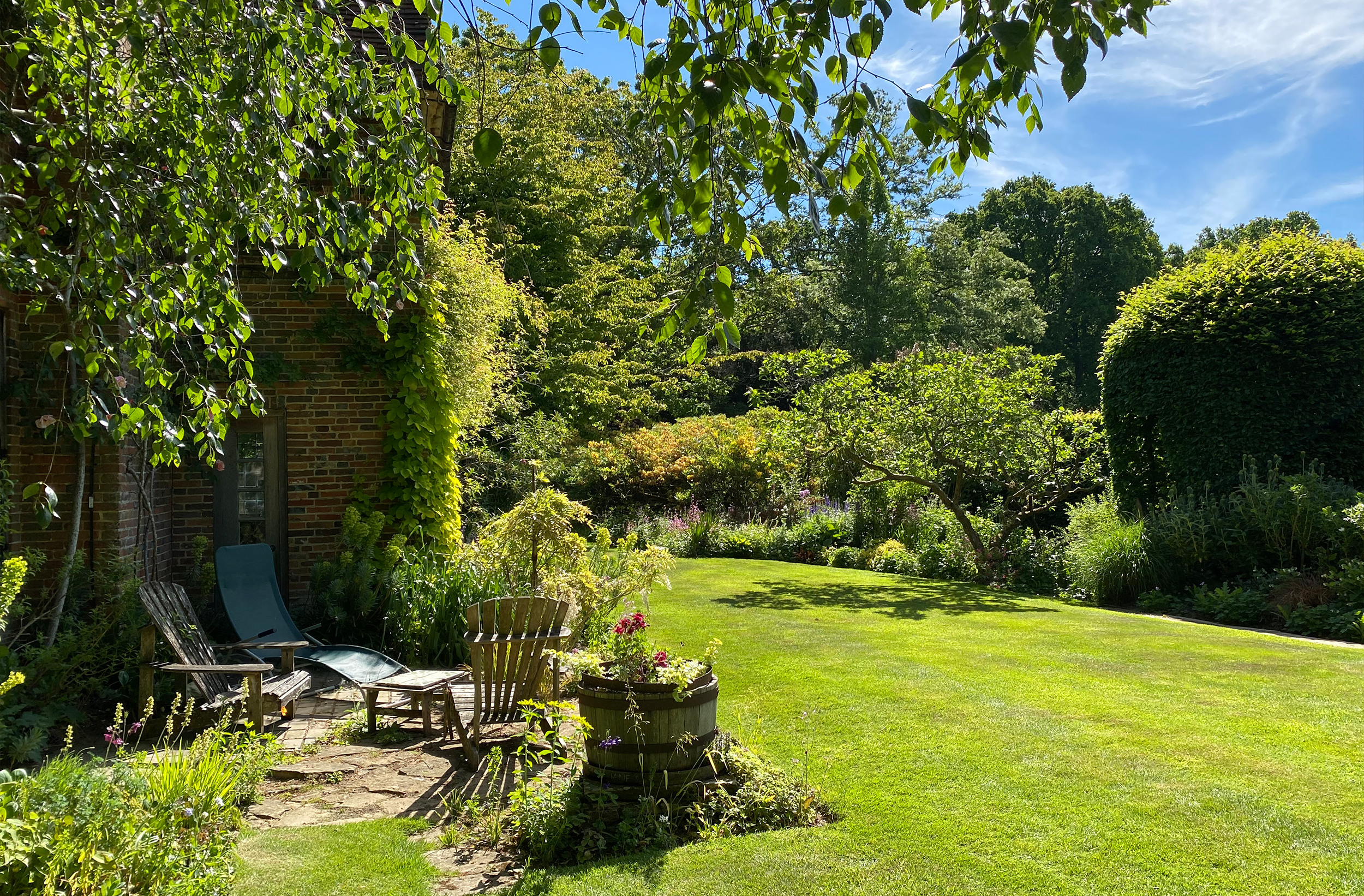
Yew Walk
The Yew Walk above the pond to the north of the garden provides one of the two severely formal notes in the whole layout. Clipped yew hedges, planted in 1909 and renovated from 2015 – 2018, rise on either side of the narrow ditch. Ferns grow in the rubble Bargate stone walls and the stream flows for about seven months of the year.
At the head of the Walk a stone seat backed by a tall bank faces the view, flanked on either side by twin standard wisterias and overhung with Japanese maple, a fig and a Parrotia persica.
After many years fighting the battle of depredations by local deer, the original roses were removed and the beds re-planted with bulbs and a variety of low plants with contrasting form and colour, giving year-round interest comprising santolinas, Viburnum davidii, penstemon, acaena, saxifrages and grasses.
